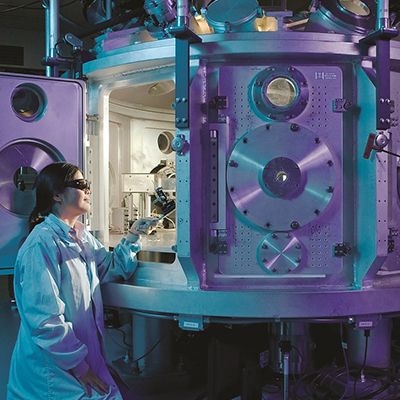
Definition
Chemical agents tests – definition
Regular conduct of tests related to the exposure of the work environment to chemical substances is one of the most important aspects of ensuring proper working conditions for employees.
Thanks to the knowledge of the concentrations of various, harmful to health substances in the air occurring in the environment, it is possible to predict health consequences, as well as to implement preventive procedures reducing occupational risk.
The most common way of absorbing chemicals into the human body is through the respiratory system. Therefore, the measurements are based on testing the concentrations of chemical agents in the air.
What influence do chemical agents have on human health?
The influence of chemical agents on the human body is determined by chemical factors of it. Chemicals can have a wide variety of properties and affect your health in many ways.
Chemical agents may have one of the following properties: explosive, oxidizing, flammable, toxic, harmful, corrosive, carcinogenic, mutagenic, affecting the reproductive system, affecting the respiratory system, etc. Some chemical factors can affect your balance, concentration, and general well-being. Others may affect the psyche of the employee.
As part of evaluating the concentrations of chemical agents, it is possible to conduct measurements and assess the impact of chemical substances in terms of:
- occupational risk assessment,
- compare real working conditions with regulations,
- evaluation of the effectiveness of technical processes reducing chemical concentrations in the work environment,
- estimating the effectiveness of the technological process.

- Ammonia concentration and content within the range: 3 – 60 mg/m3; spectrophotometric method (reference document: PN-Z-04041:1971).
- Hydrogen sulfide concentration and content within the range: 2 – 16 mg/m3; spectrophotometric method (reference document: PN-Z-04015-13:1996).
- Methanol concentration and content within the range: 0.8 – 900 mg/m3; gas chromatography method with flame ionization detection GC-FID (reference document: PN-81/Z-04028.01).
- Acetone concentration and content within the range: 10 – 2000 mg/m3; gas chromatography method with flame ionization detection GC-FID (reference document: PN-79/Z-04057.01).
- Xylene concentration and content – mixture of isomers 1,2; 1.3; 1.4; within the range: 1.67 – 600 mg/m3; gas chromatography method with flame ionization detection GC-FID (reference document: PN-78/Z-04116.01).
- Ethanol concentration and content in the range: 33.33 – 2000 mg/m3; gas chromatography method with flame ionization detection GC-FID (reference document: EV-PB-4, edition 1 of 02.01.2017).
- Butan-1-ol concentration and content of in the range: 1.67 – 600 mg/m3; gas chromatography method with flame ionization detection GC-FID (reference document: PN-Z-04155-3:1994).
- 2-methylpropan-1-ol concentration and content in the range: 0.67 – 450 mg/m3; gas chromatography method with flame ionization detection GC-FID (reference document: PN-86/Z-04155/02).
- Ethyl acetate and n-butyl acetate concentration and content within the range: 3.33 – 1800; 2850 mg/m3; gas chromatography method with flame ionization detection GC-FID (reference document: PN-78/Z-04119/01).
- Toluene concentration and content within the range: 1.67 – 600 mg/m3; by gas chromatography method with flame ionization detection GC-FID (reference document: Fundamentals and Methods of Work Environment Assessment 2011, No. 1 (67), p. 35-44).
- 2-butoxyethanol concentration and content within the range: 1.67 – 300 mg/m3; gas chromatography method with flame ionization detection GC-FID (reference document: EV-PB, edition No. 1 of 02.01.2017).
- Benzene concentration and content within the range: 1.67 – 300 mg/m3; gas chromatography method with flame ionization detection GC-FID (reference document: PN-Z-04016-10:2005).
- Extractive gasoline concentration and content within the range: 3.33 – 2000 mg/m3; gas chromatography method with flame ionization detection GC-FID (reference document: PN-81/Z-04134.02).
- Gasoline for varnishes concentration and content within the range: 2.5 – 2700 mg/m3; gas chromatography method with flame ionization detection GC-FID (reference document: PN-81/Z-04134.03).
- Kerosene concentration and content within the range: 1.67 – 900 mg/m3; gas chromatography method with flame ionization detection GC-FID (reference document: PN-92/Z-04227/02).
- Methyl methacrylate concentration and content within the range: 1.67 – 900 mg/m3; gas chromatography method with flame ionization detection GC-FID (reference document: PN-92/Z-04113/09).
- Methyl ethylbenzene concentration and content within the range: 3.33 – 1200 mg/m3; by gas chromatography method with flame ionization detection GC-FID (reference document: Fundamentals and Methods of Work Environment Assessment 2011, No. 1 (67), p. 35-44).
- Hexane concentration and content within the range: 1.33 – 215 mg/m3; gas chromatography method with flame ionization detection GC-FID (reference document: PN-Z-04136-3:2003).
- Cyclohexanone concentration and content within the range: 0.67 – 240 and 5 – 2700 mg/m3; gas chromatography method with flame ionization detection GC-FID (reference document: PN-Z-04447:2014-06, Fundamentals and Methods of Work Environment Assessment 2011, No. 1 (67), p. 35-44).
- Heptane concentration and content within the range: 3.33 – 2000 mg/m3; gas chromatography method with flame ionization detection GC-FID (reference document: Fundamentals and Methods of Work Environment Assessment 2004 No. 4 (42) p. 67-73).
- Vinyl acetate concentration and content within the range: 0.25 – 90 mg/m3; gas chromatography method with flame ionization detection GC-FID (reference document: PN-87/Z-04178/02).
- Acrylonitrile concentration and content within the range: 0.13 – 30 mg/m3; gas chromatography method with flame ionization detection GC-FID (reference document: PN-Z-04113-12:2005).
- Dichloromethane concentration and content within the range: 1.33 – 270 mg/m3; gas chromatography method with flame ionization detection GC-FID (reference document: PN-83/Z-04110/02).
- Trimethylbenzene – mixture of isomers concentrations and contents within the range: 0.5/0.6/0.8 – 510 mg/m3; gas chromatography method with flame ionization detection GC-FID (reference document: PN-Z-04016-4:1998).
- Tetrahydrofuran concentration and content within the range: 2.5 – 900 mg/m3; by gas chromatography method with flame ionization detection GC-FID (reference document: Fundamentals and Methods of Work Environment Assessment 2015 No. 4 (86), p. 191-202).
- Butan-2-ol concentration and content within the range: 5 – 1350 mg/m3; gas reduction method with flame ionization detection GC-FID (reference document: PN-Z-04155-4:1996).
- Propan-2-ol concentration and content within the range: 5.56 – 2000 mg/m3; gas reduction method with flame ionization detection GC-FID (reference document: PN-92/Z-04224/02).
- Acetic acid concentration and content within the range: 1.67 – 90 mg/m3; gas reduction method with flame ionization detection GC-FID (reference document: PN-92/Z-04224/02).
- Tetrachloroethene concentration and content within the range: 0.66 – 510 mg/m3; gas reduction method with flame ionization detection GC-FID (reference document: PN-78/Z-04118.01).

Equipment
ENVILAB-EKO measuring equipment
ENVILAB-EKO work environment laboratory uses comprehensive measuring equipment to test concentrations and chemical agents. To test the concentrations of chemical substances, we use:
- Gilibrator-2 digital flow meter
- UV-1800 spectrometer
- RadWag digital scale
- RadWag non-automatic electronic scales
- ALTER gas meter type GasHunter
- Agilent 7820A gas chromatograph
- GILIAN GilAir individual aspirator 3
We conduct measurements throughout entirety of Poland.
Legal provisions
Standards and legal provisions specifying how the chemical agents tests are to be carried out:
The Polish standard PN-Z-04008-7:2002 “Air purity protection. Sampling. Principles of air sampling in the work environment and interpretation of results.” Another applicable standard is PN-EN 689:2018-07 “Exposure at workplaces – Measurements of inhalation exposure to chemical agents – Strategy for testing compliance with limit values”.

